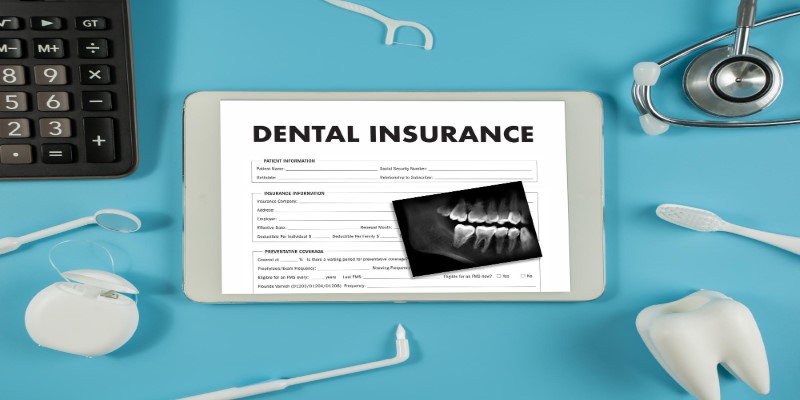
Dental insurance chooses between HMO and PPO plans, each with distinct features and benefits. Understanding the difference is crucial for making informed decisions about your oral health coverage. This comprehensive guide breaks down the nuances between Dental Insurance HMO and PPO, empowering you to select the plan that best aligns with your needs and preferences.
Understanding Dental Insurance HMO
Dental Insurance HMO, or Health Maintenance Organization, operates on a network-based system. You must choose a primary dentist from the HMO network; all dental care is coordinated through them. HMOs often require a referral from your primary dentist to see a specialist.
One significant advantage of HMO plans is their cost-effectiveness. Premiums and out-of-pocket expenses tend to be lower compared to PPO plans. However, the trade-off is less flexibility in choosing your dentist and potential limitations on covered treatments outside the network.
Exploring Dental Insurance PPO
On the other hand, Dental Insurance PPO, or Preferred Provider Organization, offers more flexibility in choosing your dentist. You can visit any licensed dentist, although staying within the PPO network typically lowers out-of-pocket costs.
PPO plans do not require referrals to see specialists, allowing for more straightforward access to specialized care. While PPO premiums may be higher than those of HMOs, the freedom to choose providers and receive care without referrals can be worth the added cost for some individuals.
Key Differences Between HMO and PPO
Navigating the choice between Dental Insurance HMO and PPO can be perplexing. Let's unravel the distinctions to guide you towards the most suitable option.
Cost Structure

HMO plans generally have lower premiums and out-of-pocket costs than PPO plans. This affordability makes them appealing to many individuals and families who want to manage their healthcare expenses efficiently.
With HMOs, you typically pay a fixed monthly premium, and your out-of-pocket costs for services like office visits, procedures, and prescriptions are often lower. In contrast, PPO plans offer more flexibility but tend to have higher premiums and co-pays. While you may pay more upfront with a PPO, you can choose healthcare providers and access services outside the network.
Provider Network
HMOs operate within a specific network of dentists and healthcare providers. When enrolling in an HMO plan, you must choose a primary dentist from this network. Your primary dentist is your point of contact for all dental care needs and must provide referrals if you require specialized treatment or services outside their scope.
This network-based approach helps control costs and ensures coordinated care but limits your choice of providers. In contrast, PPO plans allow you to visit any licensed dentist or specialist, whether in-network or out-of-network. While staying within the PPO network can result in lower costs, you can seek care from any provider without referrals, albeit at potentially higher out-of-pocket expenses.
Referrals and Specialized Care
HMO plans typically require referrals from your primary dentist for specialist visits or specific treatments. If you need to see an orthodontist or undergo a specialized procedure, you must first consult your primary dentist and obtain a referral before seeking care elsewhere.
While this referral process helps coordinate care and ensures that you receive appropriate treatment within the network, it can also be perceived as an additional step and may delay access to specialized care. In contrast, PPO plans grant you direct access to specialists without needing referrals. This streamlined approach offers more convenience and flexibility in seeking specialized care, allowing you to schedule appointments with specialists directly and without delay.
Coverage Flexibility
PPO plans typically offer broader coverage for out-of-network care compared to HMO plans. While HMOs focus on in-network coverage and may provide limited or no coverage for out-of-network services, PPOs extend coverage to a wider range of providers and treatments, regardless of whether they are within the network.
This expanded coverage comes at a price, as out-of-network services under a PPO plan often incur higher deductibles, co-insurance, and out-of-pocket expenses. However, this adaptability proves beneficial for those who prioritize options and require specialized care, especially if their healthcare needs or preferences extend beyond what the HMO network offers.
Maximizing Your Dental Coverage
Once you've chosen between a Dental Insurance HMO and a PPO, there are strategies you can employ to maximize your coverage and make the most of your dental benefits.
Regular Preventive Care: HMO and PPO plans usually include preventive services like cleanings, exams, and X-rays with minimal or no expense. Take advantage of these benefits by scheduling regular dental check-ups to detect and address issues early, potentially avoiding more significant and costly treatments.+
Understanding Coverage: Familiarize yourself with the specifics of your dental plan, including covered treatments, limitations, and exclusions. Knowing what services are included and any associated costs can help you plan and budget for your dental care more effectively.

In-Network Providers: If you're enrolled in a PPO plan, utilizing in-network providers can help you save on out-of-pocket expenses. Many PPO plans offer discounted rates for services provided by network dentists, making it financially advantageous to stay within the network for your dental care needs.
Flexible Spending Accounts (FSAs) or Health Savings Accounts (HSAs): Use tax-advantaged accounts such as FSAs or HSAs to set aside pre-tax dollars for eligible medical and dental expenses. These accounts can help you cover out-of-pocket costs not fully covered by your insurance plan, reducing dental expenses.
Wrapping It Up!
In conclusion, whether you opt for the structured approach of an HMO or the flexibility of a PPO, it's essential to prioritize your dental coverage to maintain excellent oral health. By emphasizing preventive care, gaining clarity on your coverage details, and making the most of the resources available, you can effectively optimize your dental insurance benefits and secure ongoing access to high-quality dental treatment in the years ahead.




